Dog separation anxiety can be tough to deal with. If you can diagnose it early and know how to treat it, it can be manageable.
Your dog gets agitated when you leave the house and come home to a house full of destruction — could it be dog separation anxiety? It really depends. Figuring out if your dog has separation anxiety involves analyzing the situation and observing it over time.
You will also need to have an understanding of what qualifies as separation anxiety. Let’s take a deeper dive into this common condition in pets.
Definition of Canine Separation Anxiety
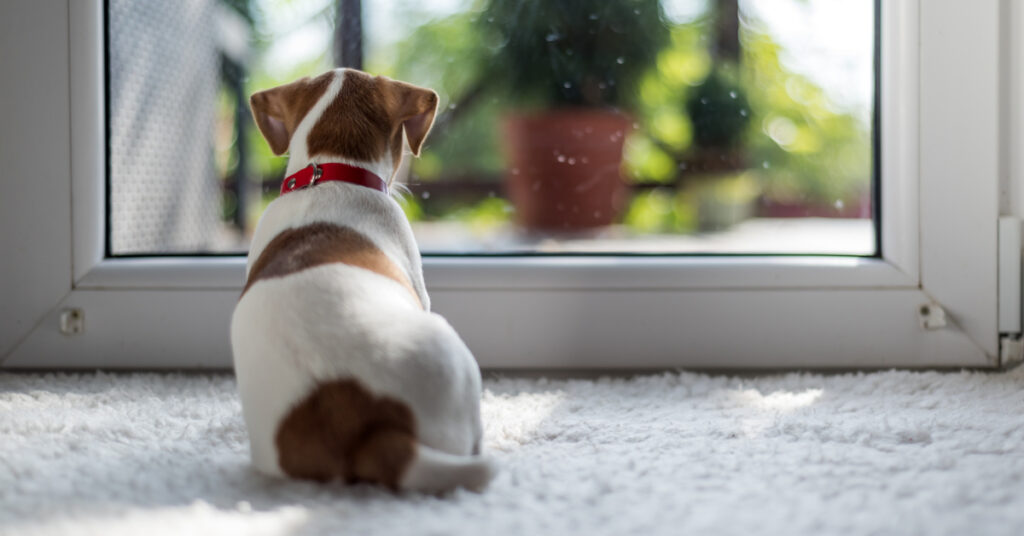
Separation anxiety in dogs is an expression of their distress when they are separated from you. The emotion behind the separation anxiety is usually fear of being without you or abandonment. It typically develops when the dog forms a very tight attachment to a guardian.
Dogs will display various symptoms when they are emotionally distressed in your absence, and we’ll cover some of that in a bit.
Let’s focus on what could cause canine separation anxiety so pet parents new and old can understand how to take steps towards preventing and treating it.
The Causes
Some dogs may develop separation anxiety while others won’t. It depends a lot on the dogs’ personality as well as how they were raised. It is possible for a multi-pet household to only have one or two affected by this condition.
Change
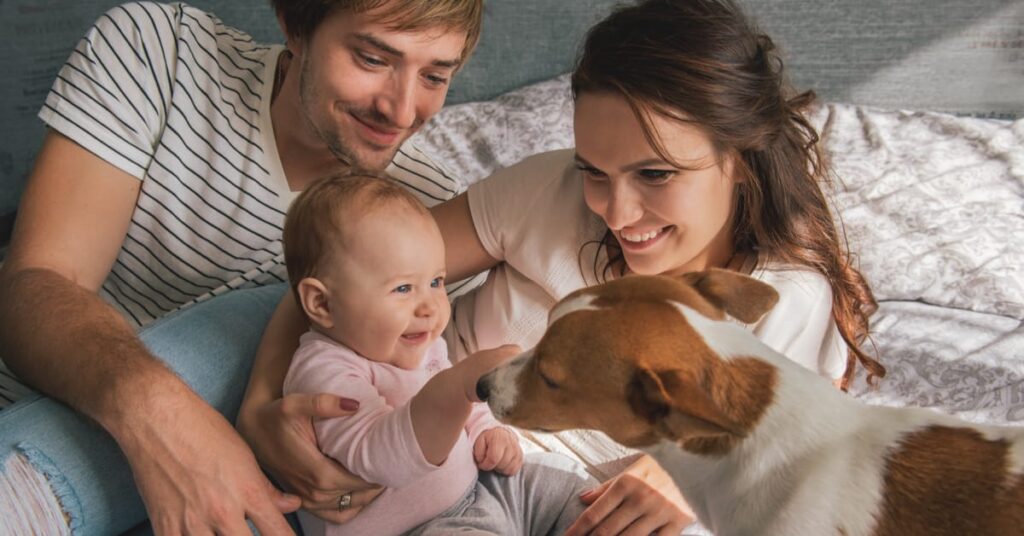
Dogs thrive on routine and a set schedule, so it’s easy to imagine that a big change can throw them off. A move to a new home, a sudden change in the guardian, or changes to family members (a new birth, death, welcoming another pet, etc.) can all make the dog feel stressed and trigger separation anxiety.
Even if your dog was fine when you left the house before the change happened, you could have yourself a very different dog after.
Separation anxiety can also develop at any stage in your dog’s life. Just because you have had a very well-behaved dog in his younger years and prime, old age can also bring anxiety.
Traumatic event
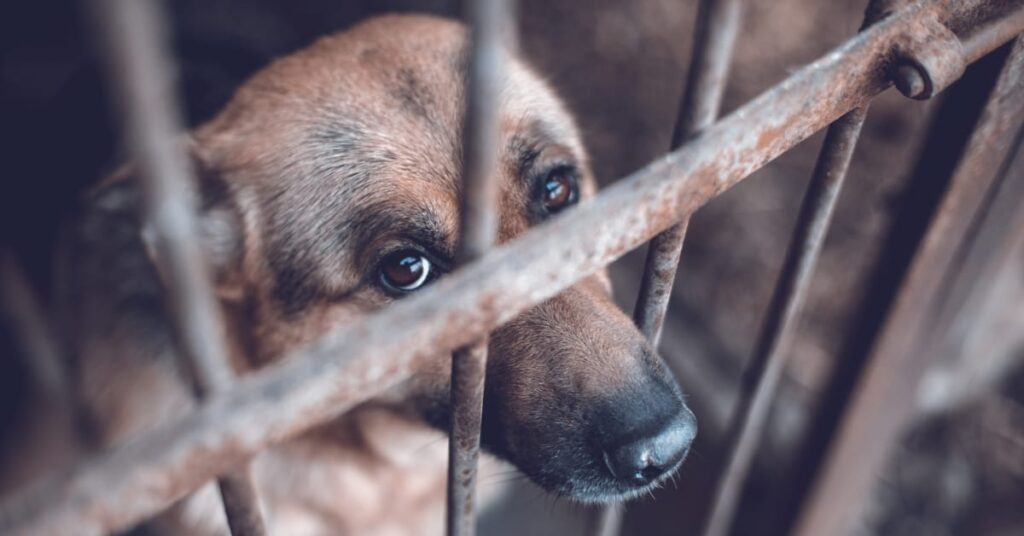
Trauma causes separation anxiety. Previous experience of being abandoned can also cause separation anxiety to take root in your dog.
Dogs are very similar to humans in the way that we attribute our experiences now to the past. In your dog’s mind, if it happened once, it can maybe happen again. While you know that you wouldn’t abandon your dog, it’s very difficult to communicate that to him when he is more afraid of you leaving than anything else.
It takes time, patience, rewards, and repetition to curb this issue, but it can be done.
How Your Dog Was Raised
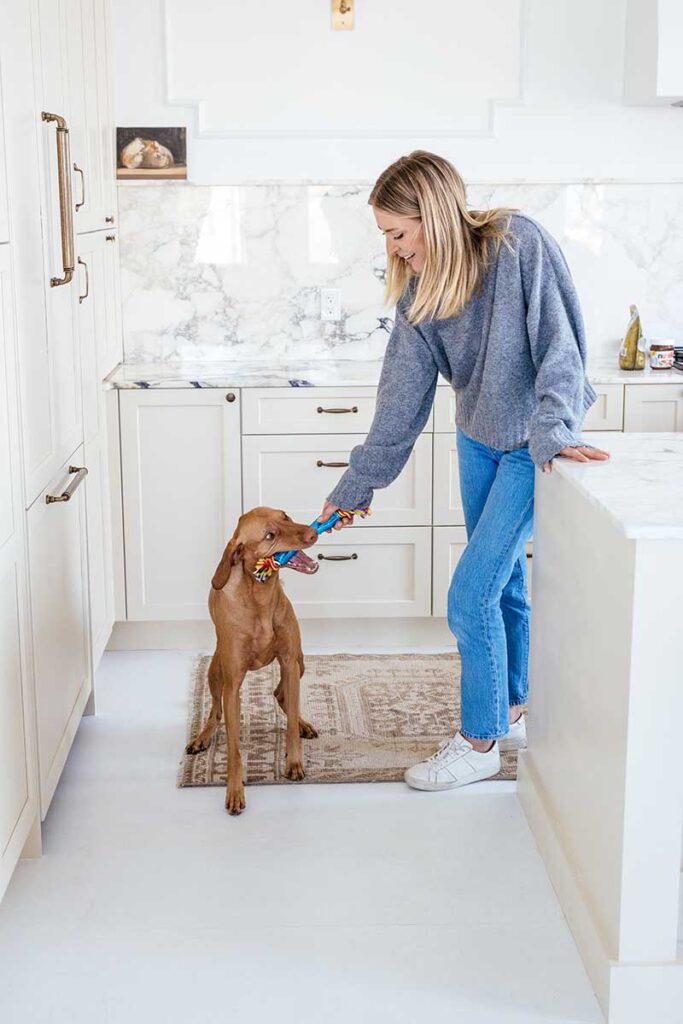
Your dog may not have suffered from any trauma or experienced big life changes, but why does he seem to react poorly to you leaving the house? We mentioned that the personality of the dog also has a hand in separation anxiety development, but the way you raised your pooch does as well.
What do we mean? Well, if your dog has never had or been taught about “alone time”, then there is a big chance he won’t be receptive when the house is empty. If you constantly reward your dog’s need for attention throughout his lifetime, then there is also a good possibility he won’t cope well without you.
Signs of Separation Anxiety
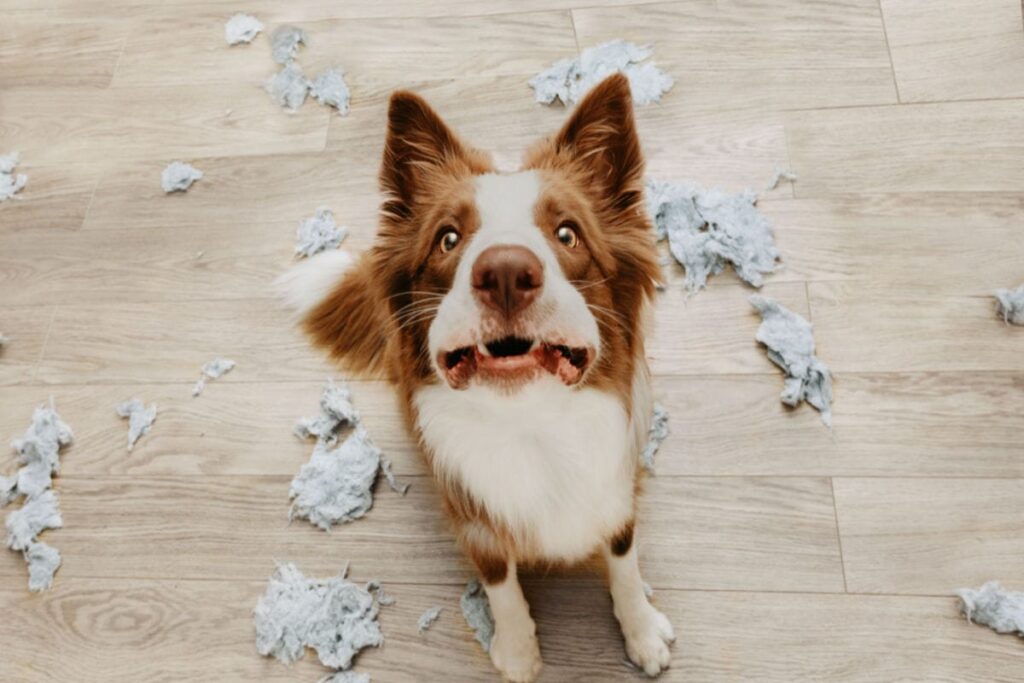
What does separation anxiety in a dog look like? Is it similar to separation anxiety in a child? Common behaviors include:
- Nervous urination and defecation
- Frantic pacing
- Excessive panting or drooling
- Crying, excessive barking, howling (forms of vocalization not commonly heard)
- Coprophagia (consuming feces)
- Destructive behavior
- Escape attempts
- Any of the above resulting in self-injury
These are what most dogs show when they are suffering from separation anxiety. To give you a better picture of what it would look like, here are examples of three cases.
Mild Cases
Separation anxiety in dogs manifests in many ways, but a general example of a mild form is a dog who settles down not long after you leave, but gets a little agitated when you’re preparing to go, and maybe cries a little in your absence.
Moderate Cases

A more moderate case of separation anxiety could be a dog who pants and paces while vocalizing. There could also be drooling and maybe nervous poops and urination involved. Eventually, a dog with a more moderate case of separation anxiety will settle down when he tires himself out.
Severe Cases
Severe cases of separation anxiety would need professional help to treat. You may have a dog who is so anxious and distraught that he forgets to eat. If you notice your dog losing weight, there is food to help your dog gain weight.
Your dog may also engage in destructive behavior and wreak havoc in your home. We’re talking about tearing up carpet and chewing through drywall, which are examples of dangerous behaviors. Your dog could consume harmful objects and maybe even injure himself in his attempt to escape to get to you.
We have seen broken teeth, torn nails, scrapes, and cuts, and there is also a chance that your dog may get lost or run across a busy street — and you know how that can end.
How to Manage Separation Anxiety in Your Dog
Remember that your dog is also suffering if he has separation anxiety. We understand that it’s very tough on the owners, but your dog is having a tough time as well. To help you both get through this, here are a few ways to manage and help separation anxiety in your dog.
Exercise
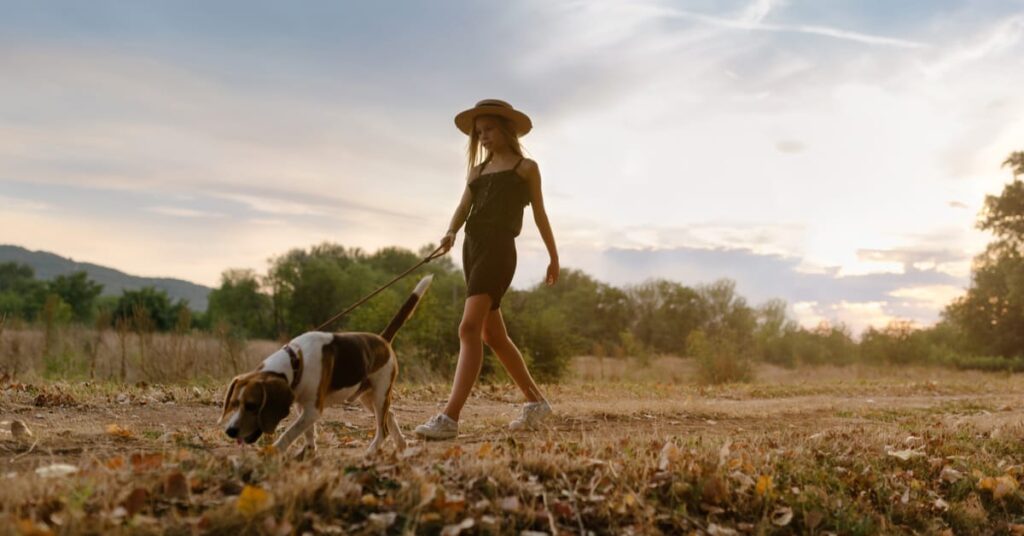
If your dog is sufficiently mentally and physically stimulated, then he should be pretty well behaved. For mild to moderate cases, expending your dog’s excess energy before leaving the home can keep him calm when you do, because he will be too pooped to cause a ruckus.
Don’t forget that mental stimulation is just as important as physical, so engage in some training exercises and give your dog a puzzle toy to exercise his mind before or after playtime.
Crate Training
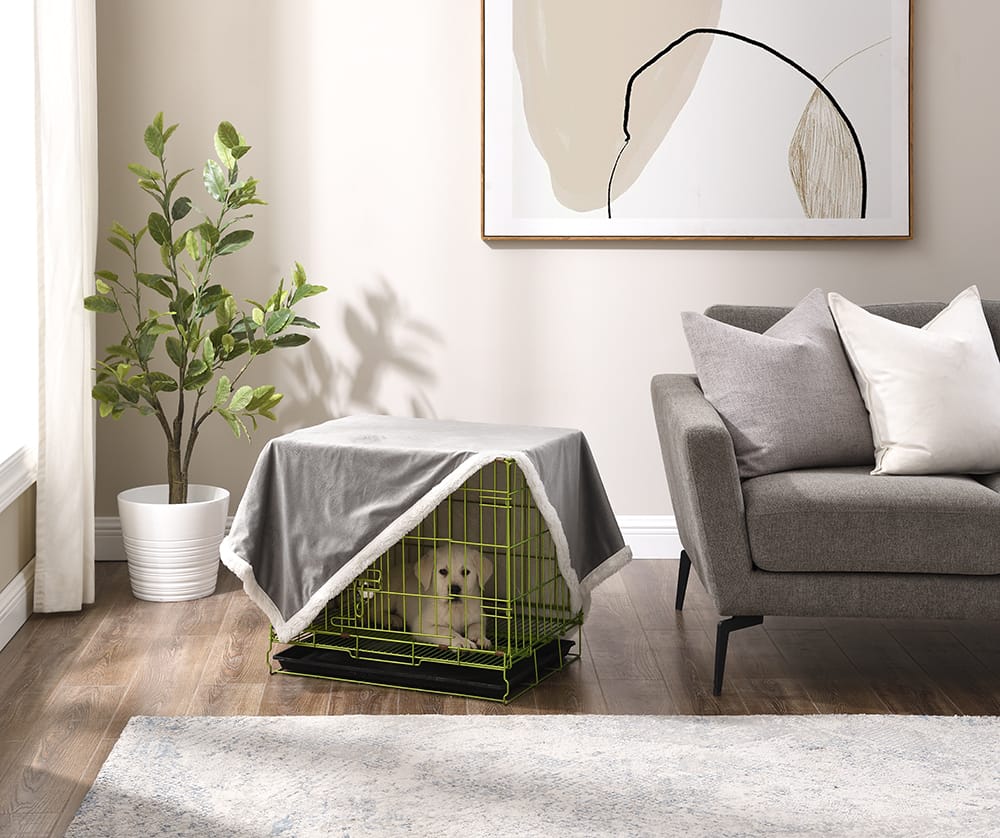
Crate training should be introduced as early as possible, but note that it might not be the best way to treat severe separation anxiety, especially if it’s a new concept to your dog. A dog who is prone to escaping could injure himself trying to tear the crate apart to get out.
Crate training, if done correctly, should provide your dog with a safe “den”. The crate will be associated with comfort and safety. A place where your dog enjoys being in and can retreat to when he needs some peace and quiet. Not to mention, crate training is also incredibly helpful when used in tandem with potty training.
Jobs and Tasks

Distract your dog. Give him plenty of things to do around the house. For example, stuff peanut butter or one of his favorite treats into a toy and have him work at getting it out. You will be surprised how long a stuffed toy can keep your dog occupied and make him forget about your absence.
Here are some good stuffable dog toy options:
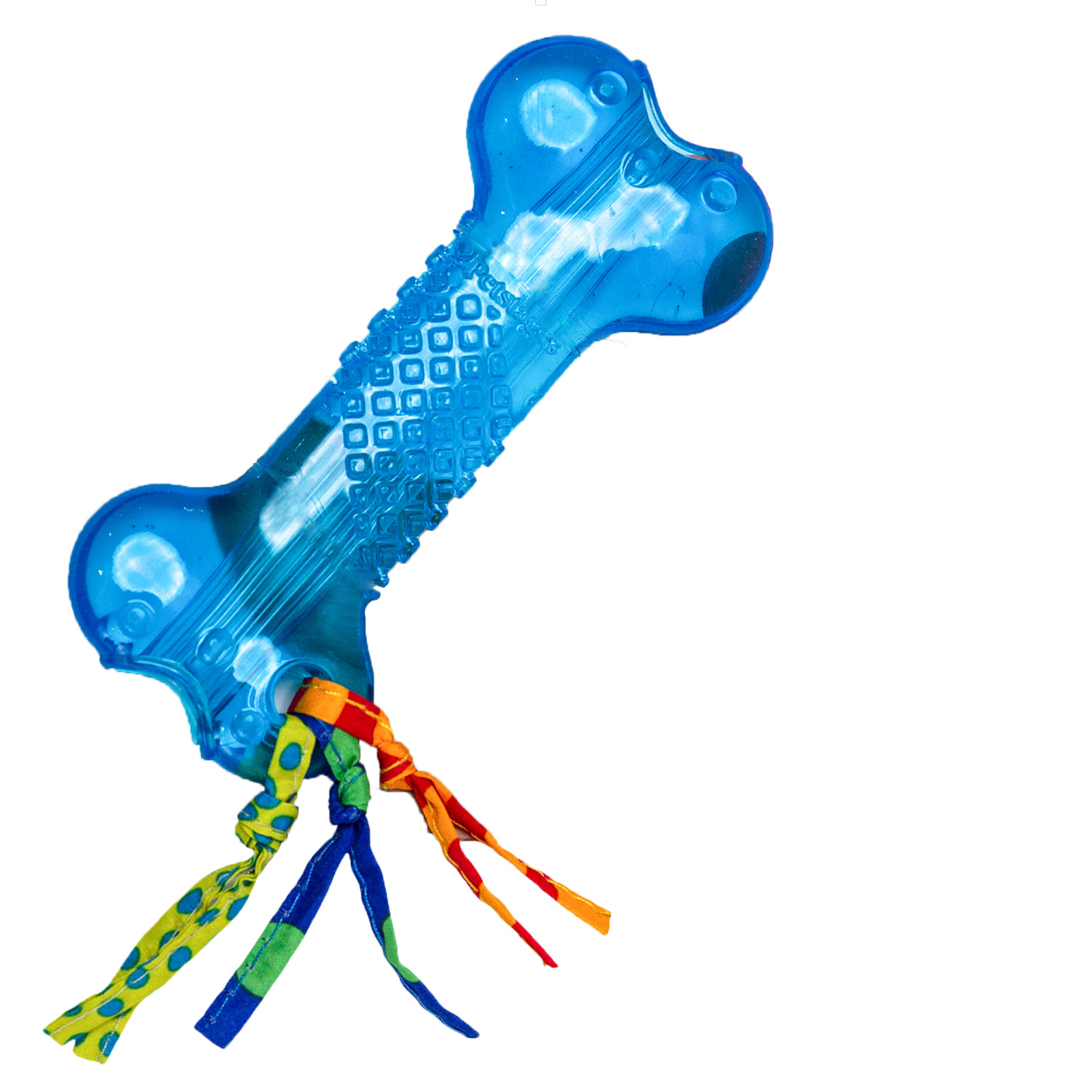
Orka Alternative Dog Chew Toy, Bone
The Petstages Orka Mini Bone dog chew toy provides your pup with an appropriate option for instinctual satisfaction, while helping to reduce boredom and destructive behavior. The unique Orka TPE rubber material keeps these toys lasting through tough chewing while keeping dogs interested. The flat shape of the Orka Mini Bone helps exercise jaw muscles while rope pieces support good dental hygiene by…
Desensitization & Counter-Conditioning
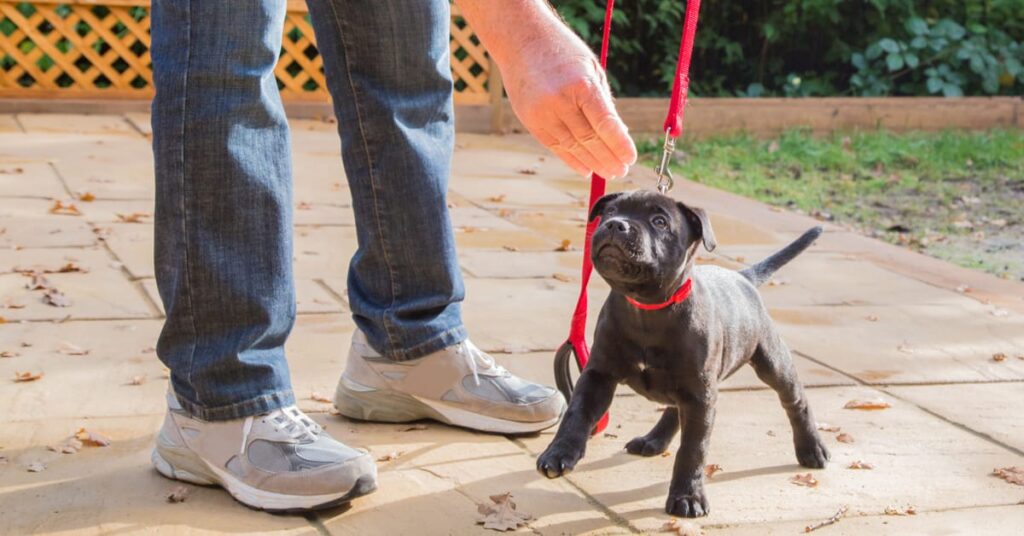
There are dog parents that have to go to work every weekday and have an active social life during the weekend. A lifestyle like this will see a lot of time out of the house, so their dogs are most likely used to it. On the other hand, if you work from home and enjoy downtime indoors with your dog on the weekends, then your dog may be less receptive when you do leave the house.
Sometimes it’s just a matter of leaving the house more and getting your dog used to it — this is called desensitization.
Counter-conditioning takes desensitization a little further. Right now if you have an anxious dog, then he is most likely associating your leaving with abandonment and doom. The key to counter-conditioning is to replace the doom and gloom with positivity. You want to create new thought processes by making the act of leaving the house for long periods of time something your dog doesn’t mind.
An easy way to create a positive association is to “reward” your dog before you leave. The best way to do it is to bring out a high-value special treat your dog only gets to enjoy when you’re about to leave. This way, they will associate “human leaving” with “favorite treat”.
Professional Help, Calming Supplements, and Medication
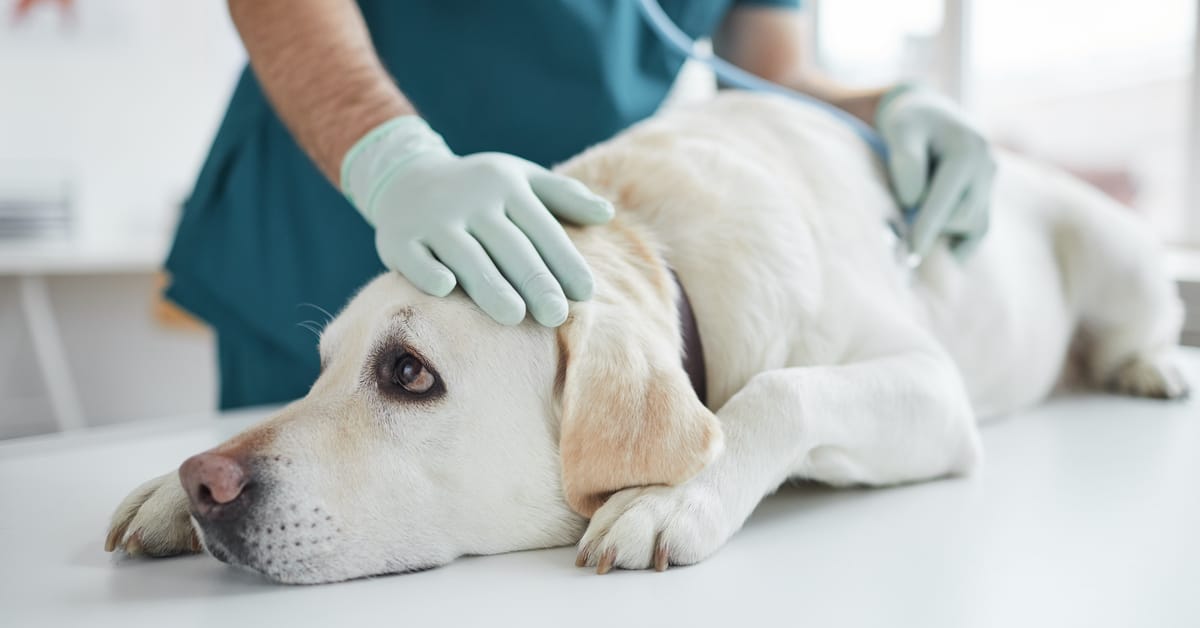
When all else fails, you may need to call in the cavalry. Veterinary behaviorists could prescribe anxiety medication or suggest the use of calming supplements and scents. Keep in mind that it could help in some cases while other instances could be better solved with professional behavior modification training using positive reinforcement.
Each dog is different, and in order to figure out the best plan of attack, we would suggest dog owners consult with a vet or dog trainer first to see what they recommend for the dog’s behavior.
How to Prevent Separation Anxiety in Pets
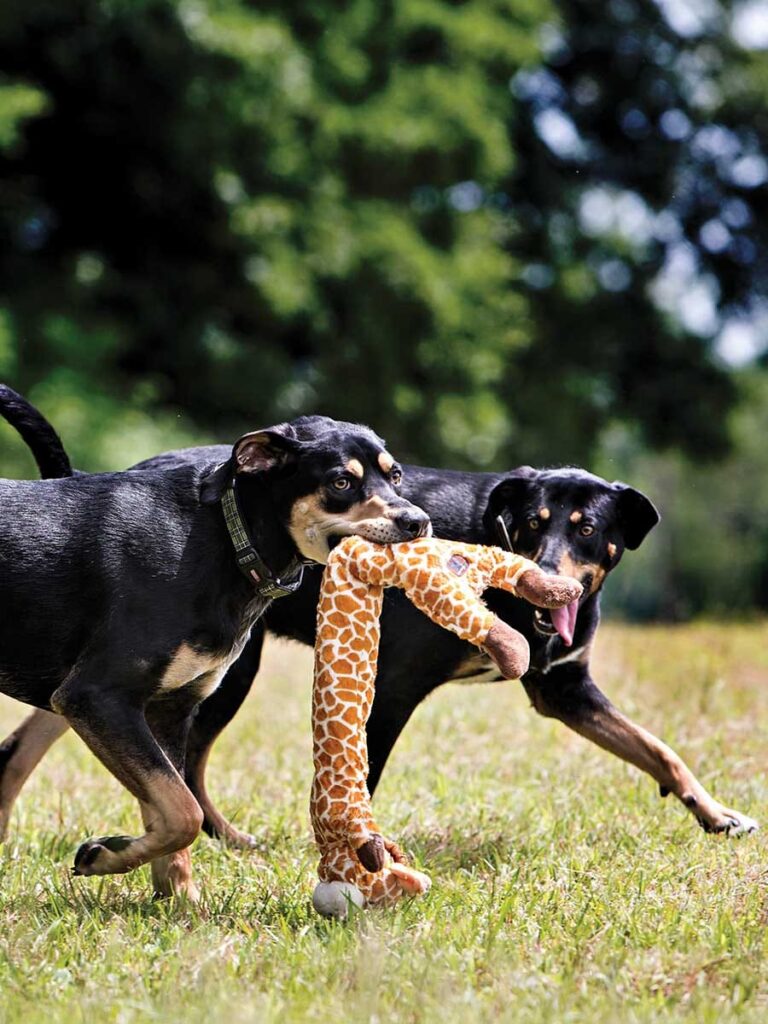
We are going to start by saying separation anxiety can’t always be prevented. Your dog and his ancestry may be more prone to developing separation anxiety. This is often seen a lot in working and hunting dogs. However, that doesn’t mean we can’t try, right?
Socialization
Socialization involves new experiences. It is one of the number one things a vet and trainer will recommend you do when you bring a dog home. Socializing can teach a dog to be confident and learn coping skills, all of which will be called into action when you leave the home.
It will also teach your dog that you are not the entire world (although he will definitely love you like you are) and it’s okay when you’re gone because you will be back.
Crate Training
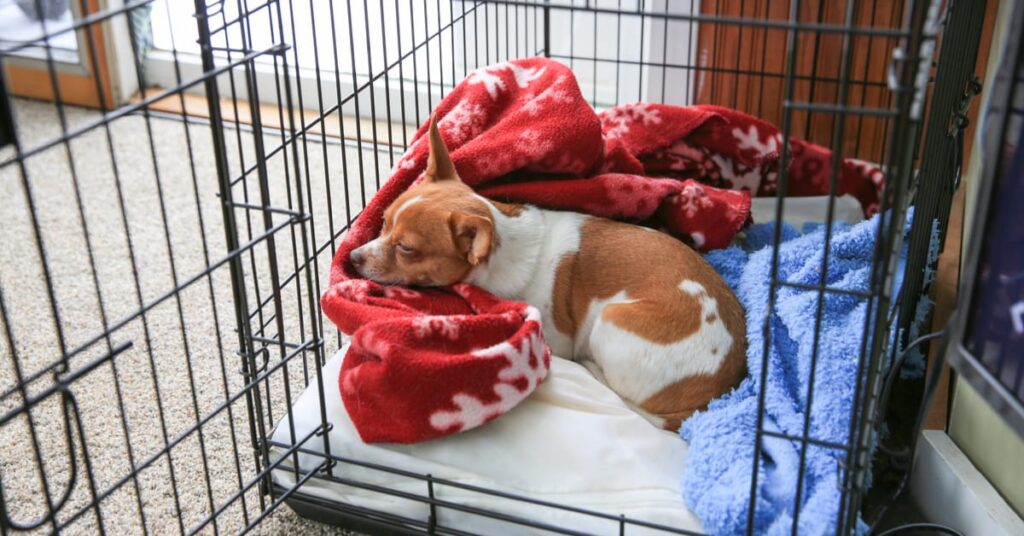
As we mentioned above, crate training can provide your dog with a safe space where he can feel secure when you’re out of the house. It should be a place he likes to be in and feels comfortable staying in for a long time.
Don’t Make a Big Deal
Don’t make a spectacle of leaving. Just quietly get dressed, grab your keys, and leave. Don’t always make it a point to say goodbye, tell your dog you will miss him, etc.
Stay calm because your dog picks up on your emotional cues and will likely mimic them. The same goes for when you come home. Don’t make it a big deal when you come home and be overly animated. Just put your things down and give your dog a quick and calm hello.
Teach Your Dog How to Be Alone
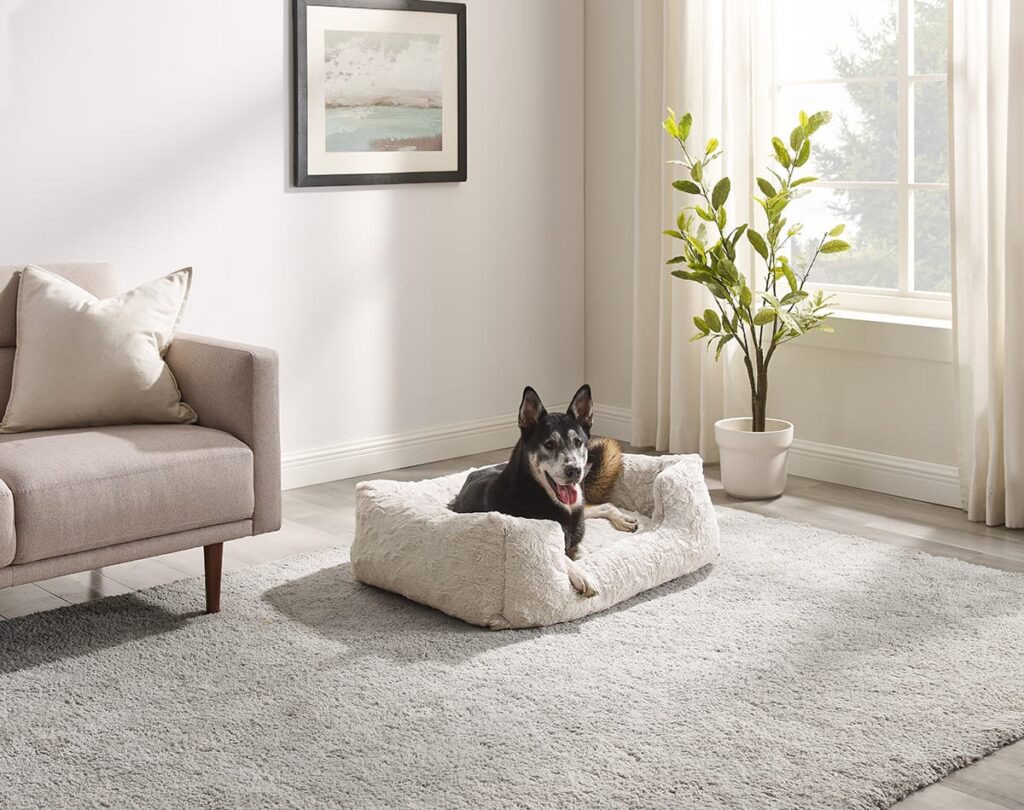
As we also mentioned above, you have to teach your dog how to be alone. You can do that by leaving him alone from time to time or keeping him in his crate while you do work around the house. Just don’t let your dog always be around you. Get your dog used to being alone early so separation anxiety is less likely to develop later on.
Daily Exercise
As said, exercise is important for your dog’s health and to keep him calmer during the day. A well-exercised dog is a happy and content one. Just don’t forget to give him mental stimulation as well!
Bottom Line
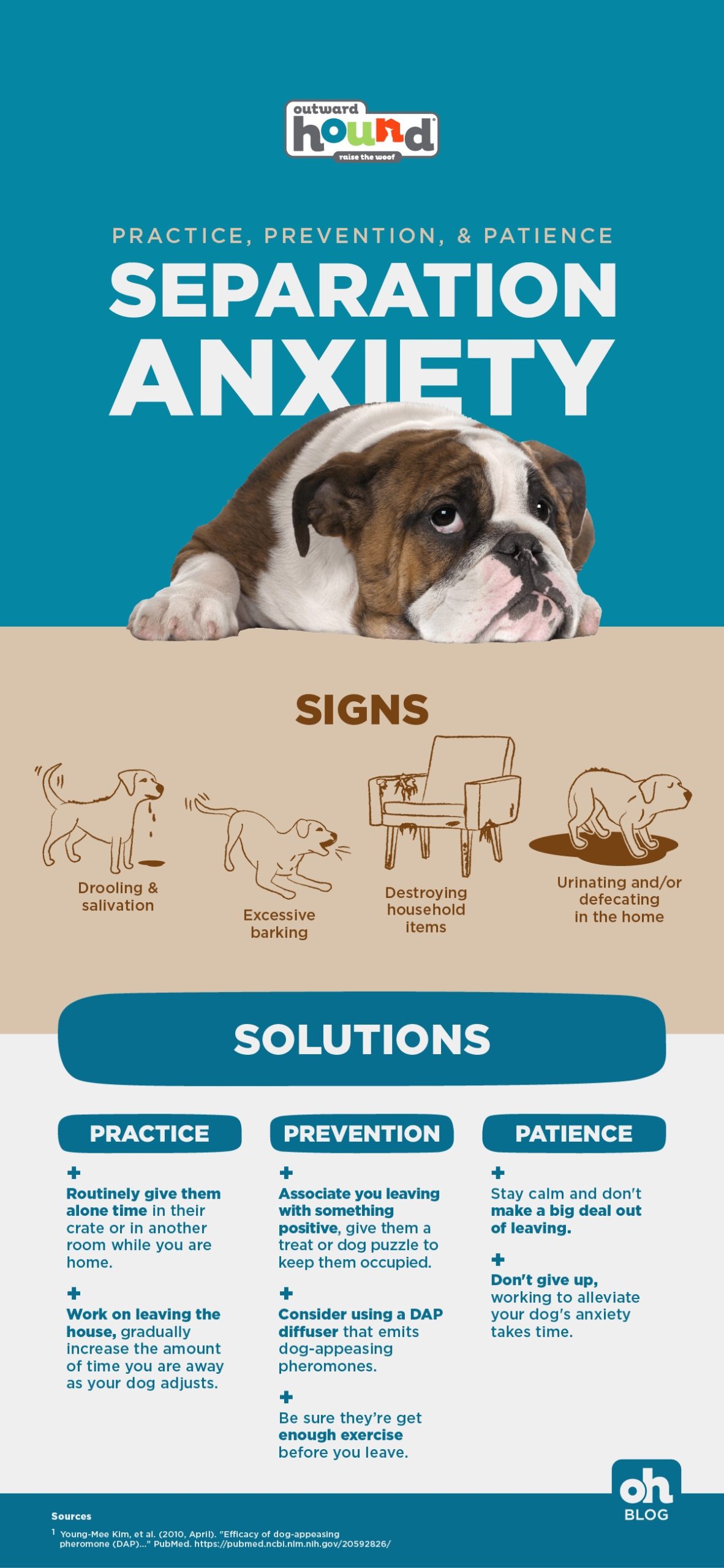
We understand that separation anxiety is tough for both you and your dog. However, it’s definitely not the end of the world! It is a manageable condition once you know what it is, what caused it, and come up with a treatment plan.
Don’t hesitate to enlist the help of a professional if you’re at a loss at what to do, but remember that it takes time, patience, and repetition to curb the issue. Work at it slowly every day and both you and your dog will overcome it!
 Amazon
Amazon Chewy
Chewy
